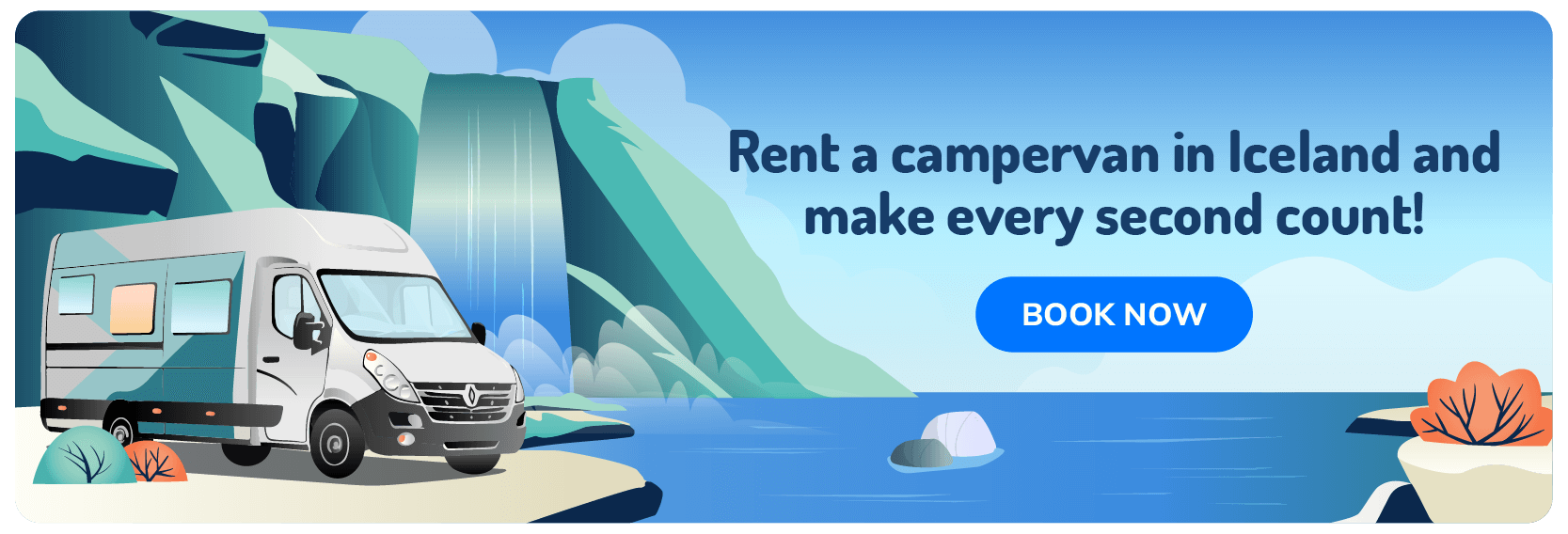Ever tried booking a last-minute hotel in Iceland only to find prices that make your wallet weep? Yeah, no thanks. That's why savvy travelers ditch the overpriced stays and hit the road in a campervan.
But where do you even start planning the perfect Iceland itinerary without missing epic waterfalls, hidden hot springs, and the best overnight spots? You've landed in the right place. This guide maps out the ultimate 7-day campervan road trip, packed with jaw-dropping sights, insider tips, and must-know hacks to make your journey smooth.
Why a Campervan is the Best Choice for Your Iceland Trip Itinerary
Iceland isn't a place to be confined by hotel check-ins, crowded bus tours, or overpriced accommodations. A campervan hands you the keys to absolute freedom. No rigid schedules, no last-minute booking stress, just you, the open road, and the most breathtaking landscapes on Earth.
Want to chase the northern lights without rushing back to a hotel? Go for it. Found a hidden hot spring? Stay as long as you want. A campervan turns Iceland into your personal playground, where the only limits are the ones you set. If you're ready to ditch the cookie-cutter travel experience, there's no better way to explore.
The Game-Changing Benefits of Exploring Iceland in a Campervan
A campervan isn't just transportation; it's total control over your Iceland adventure. It makes every stop, every detour, and every overnight stay an experience in itself.
- Go Where Others Can't – Tour groups stick to the main attractions, but a campervan gets you beyond the tourist trail. Remote fjords, lava fields, and hidden waterfalls are all within reach.
- Your Schedule, Your Rules – Sleep in, start driving before sunrise, or stop at that scenic overlook for an extra hour. With no rigid itinerary to follow, every moment is yours to shape.
- Save Serious Cash – Hotels and restaurants in Iceland can drain your budget fast. A campervan lets you skip expensive stays, cook your own meals, and stretch your travel funds further.
- Comfort and Convenience – Modern campervans come with everything you need: a cozy bed, storage, a kitchenette, and even WiFi in some cases. No endless packing and unpacking, no dragging luggage around, just pure efficiency.
- All-Season Travel – Whether you're chasing the midnight sun in summer or hunting the northern lights in winter, a campervan adapts. Just choose a 4x4 camper for winter and Highland roads.
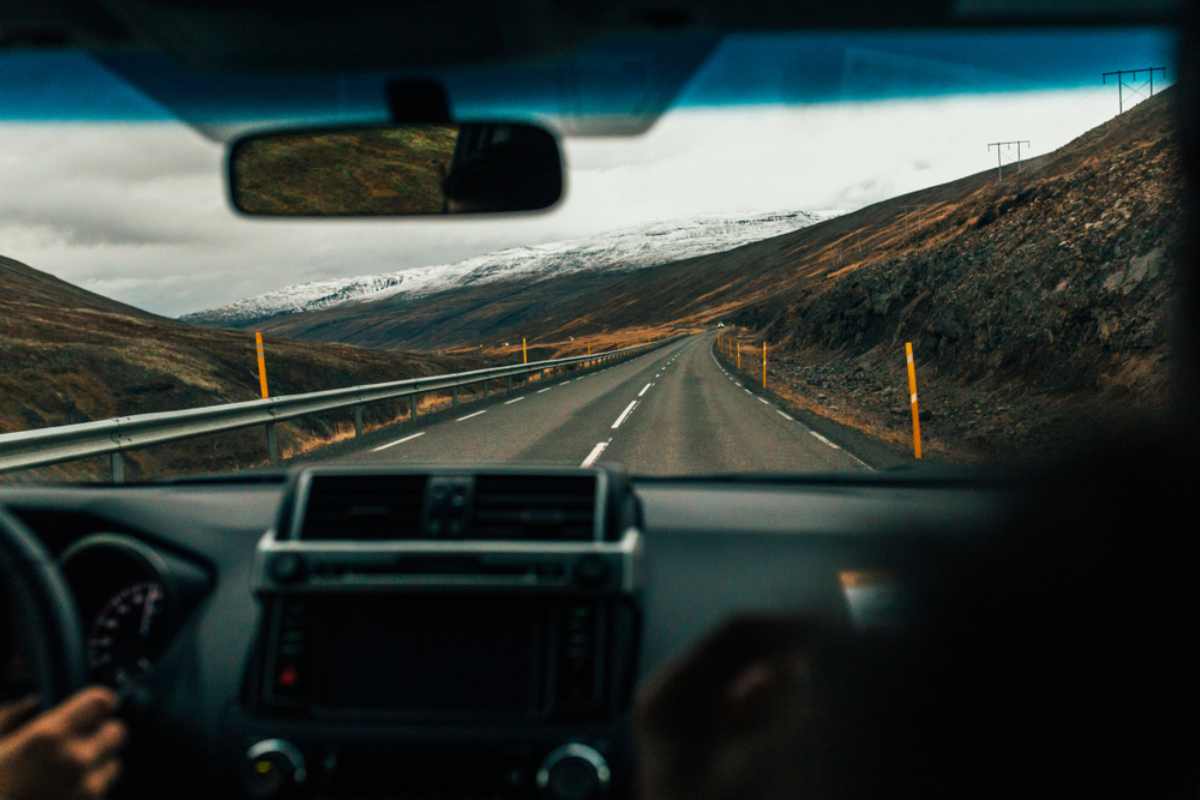
Essential Tips for Planning Your Campervan Iceland Itinerary
A trip to Iceland and need an itinerary that doesn't leave you scrambling for last-minute campsites or battling the elements unprepared? Iceland's weather is unpredictable, its roads can be unforgiving, and wild camping rules have changed.
But with the right plan, you can own your adventure, stay ahead of the crowds, and experience Iceland without limits. Here's what you need to know before hitting the road.
Understanding Iceland's Weather and Seasons
Iceland doesn't care about your plans. One minute, it's blue skies, and the next, you're in a sideways rainstorm. Whether you're crafting an Iceland summer itinerary or braving the winter cold, knowing what to expect from Iceland's weather will keep your trip running smoothly.
- Summer (June to August) – Long daylight hours, mild temperatures (10-13°C / 50-55°F), and fully open roads. Expect rain about 10 days a month, so waterproof gear is a must.
- Shoulder Seasons (May and September) – Fewer crowds, slightly lower temps (6-13°C / 43-55°F), and a good balance of open campsites and accessible roads.
- Winter (November to March) – Not for the unprepared. Expect -1 to 3°C (30-37°F), limited daylight, road closures, and closed campsites. If winter camping is your thing, get a 4x4 campervan, studded tires, and a serious cold-weather strategy.
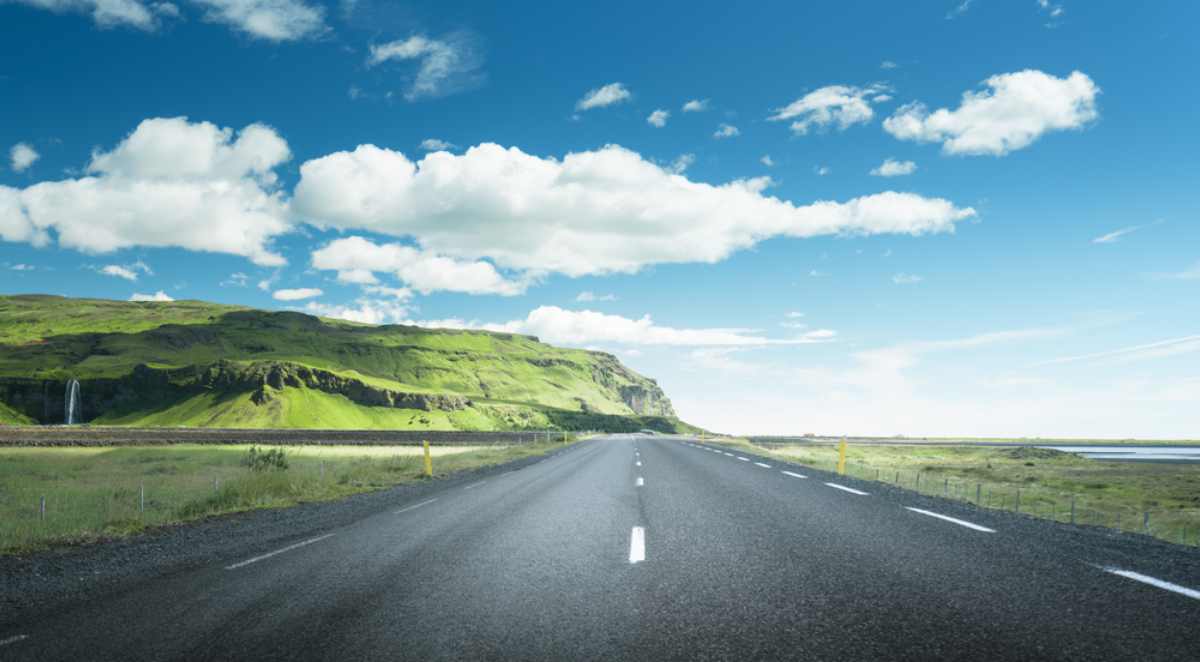
What to Pack for a Campervan Trip in Iceland
A solid packing list means fewer detours to overpriced gear shops and more time to enjoy the trip. Iceland is unpredictable, so gear up like you mean it.
Clothing
- Waterproof and windproof jacket and pants
- Warm layers (thermal base layers, fleece, wool sweaters)
- Hiking boots and thick socks
- Hat, gloves, and scarf
Camping Gear
- Sleeping bags rated for low temperatures
- Quick-drying towels
- Headlamp or flashlight
Electronics
- Car charger and power bank
- Adapter for Icelandic outlets (Type C and F)
Miscellaneous Must-Haves
- Reusable water bottle (Iceland's tap water is gold)
- Offline maps or GPS device
- Camera and extra batteries
Cooking Gear
- Portable stove and fuel (if not included in your rental)
- Compact cookware and utensils
Pro Tip: Many gas stations sell small propane canisters, so check your camper's setup before hitting the road.
How to Find and Navigate Campsites Like a Pro
An itinerary for Iceland is only as good as your overnight stops. Iceland has some strict camping laws, so planning where to park for the night is crucial.
- Campsite Availability – Most campsites operate from May to September. If you're traveling outside these months, check opening dates in advance.
- Facilities – Expect basic amenities like toilets and showers. Some sites also offer electricity, kitchens, and laundry.
- Booking – From June to August, the most popular sites fill up fast. Booking ahead ensures you're not left scrambling for a spot.
- Camping Card – This pass grants access to over 40 campsites at a fixed price, saving you money on longer trips.
- Wild Camping Rules – Wild camping is not allowed unless you have permission from the landowner. Stick to designated campsites.
- Year-Round Options – Winter travelers should use a map of open-all-year campsites to avoid ending up at a closed site in freezing temperatures.
Bottom Line: A well-planned Iceland itinerary keeps you moving, avoids campsite stress, and lets you experience Iceland the way it's meant to be—wild, remote, and unforgettable.
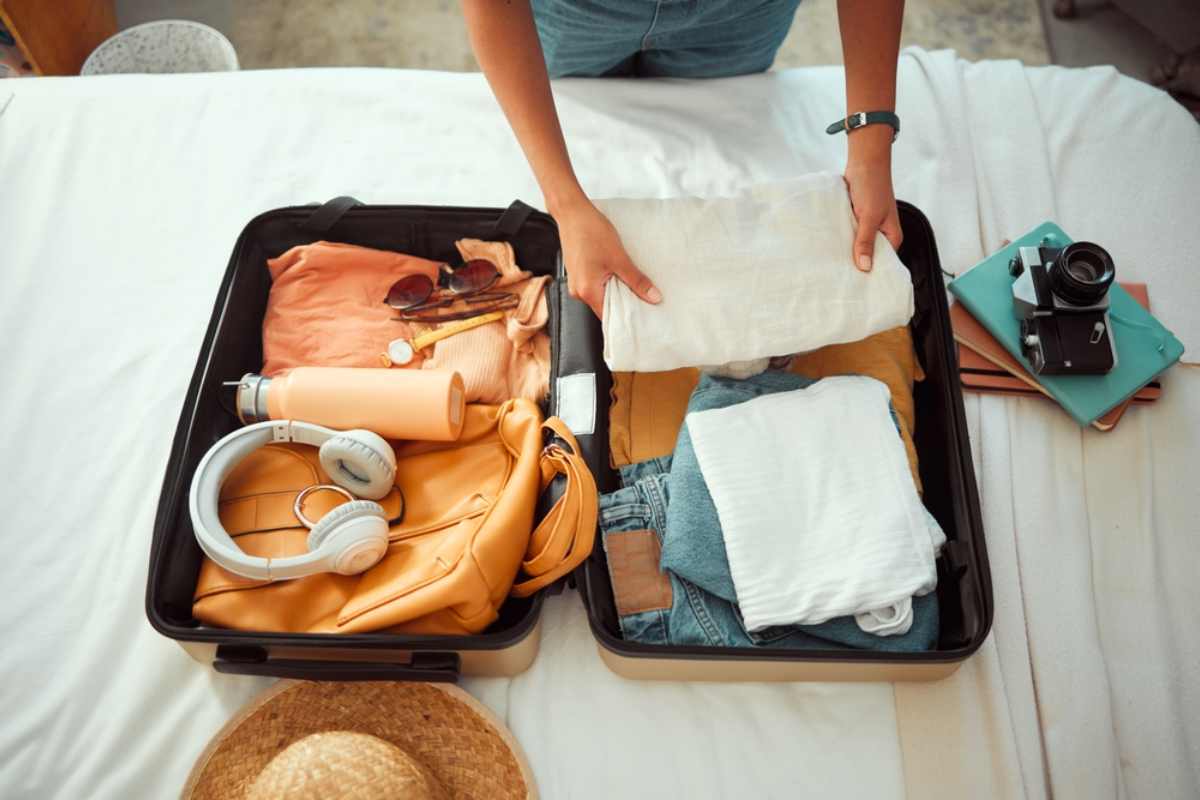
A 7-Day Campervan Itinerary for Exploring Iceland
Seven days. One van. No rules. If you're tired of rigid tour schedules and overpriced hotels, then this is the best Iceland itinerary for travelers who want the freedom to chase waterfalls, pull over at jaw-dropping landscapes, and sleep under the midnight sun or northern lights.
This Iceland travel itinerary will take you through the country's most epic spots, from glacier lagoons to black sand beaches, without the stress of rushed itineraries. Buckle up; this is how you own your Iceland vacation itinerary.
Day 1: Land, Grab Your Van, and Conquer Reykjavik
Your Iceland travel itinerary kicks off the second you land at Keflavík International Airport. First stop? Motorhome Iceland, conveniently located right at the airport. Skip the taxis, grab your campervan, and get ready to hit the road. Reykjavik is only a 45-minute drive away, and this is where your adventure truly begins.
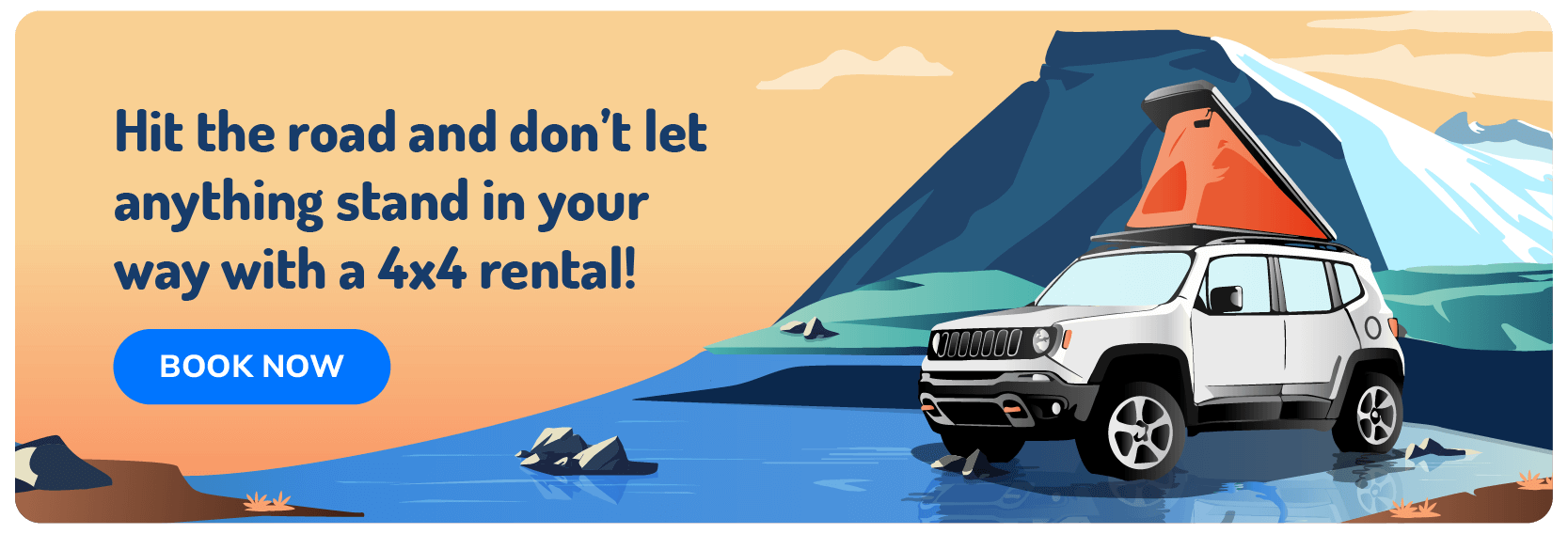
Start with Hallgrímskirkja, where the panoramic views from the tower set the stage for the days ahead. Wander down Laugavegur, Reykjavik's buzzing main street, before stopping by the Harpa Concert Hall and Sun Voyager sculpture for a dose of architecture and mythology.
If you're curious about Icelandic history, the National Icelandic Museum delivers. Wrap up your first day with local flavors like Arctic char or Icelandic lamb, then head to Reykjavik Campsite for a hot shower and a solid night's sleep. Rest up; tomorrow, you will take on the open road.
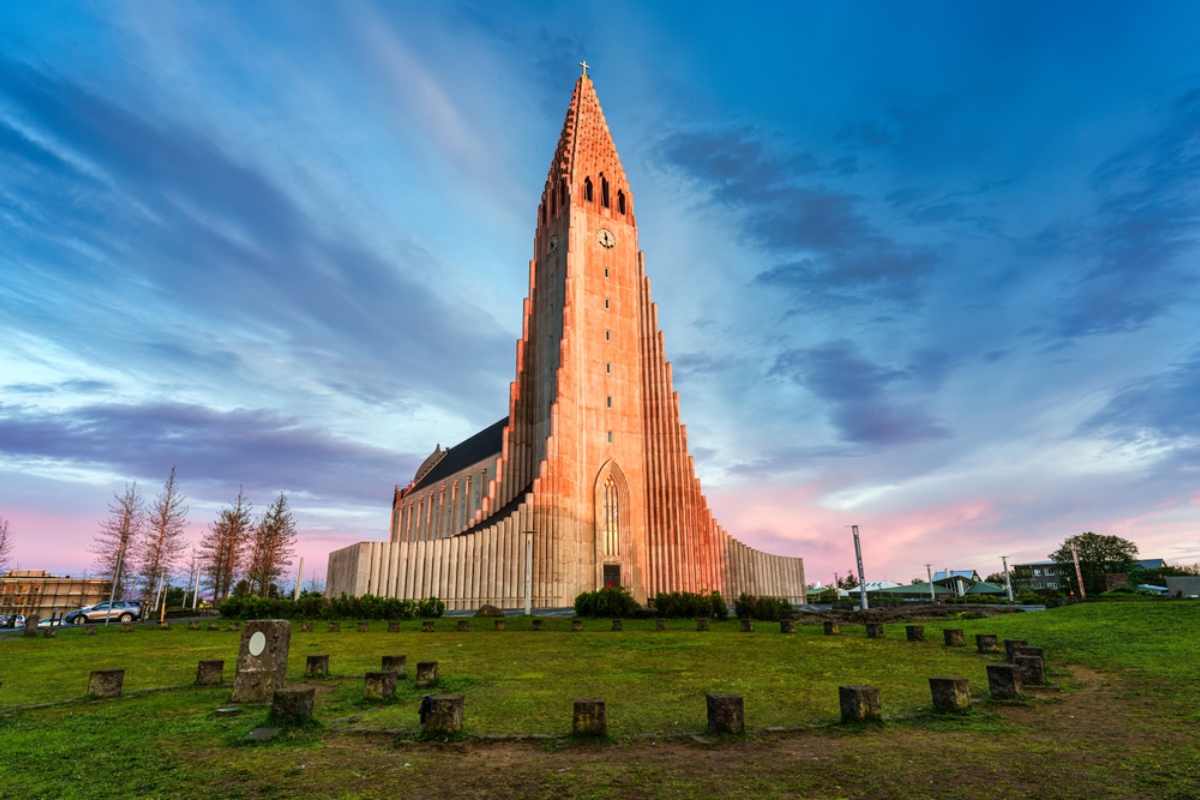
Day 2: Golden Circle Thrills and Þingvellir's Tectonic Drama
A week in Iceland itinerary isn't complete without tackling the legendary Golden Circle, and today, it's all about mind-blowing landscapes and raw geological power. First up is Thingvellir National Park, where the Earth itself is pulling apart. Walk between the North American and Eurasian tectonic plates, explore Almannagjá Gorge, and stand where Vikings once formed the world's oldest parliament.
Next, drive to the Geysir geothermal area, where Strokkur blasts boiling water sky-high every few minutes. Just when you think Iceland can't get more intense, Gullfoss waterfall proves otherwise, thundering into a deep canyon with unreal force.
If you've got extra time, hike around the Kerið volcanic crater or take the plunge at Silfra Fissure, where crystal-clear glacial water lets you snorkel between continents. End the day at Skjól Campground, near the Secret Lagoon, where you can unwind in geothermal waters before resting up for the wild south coast tomorrow.
Day 3: South Coast Icons – Waterfalls and Black Sand Beaches
The Iceland itinerary kicks into high gear as you roll along the legendary South Coast, where every stop feels straight out of a fantasy film. First up, Seljalandsfoss, the waterfall that lets you walk behind a wall of thundering water. Just prepare to get soaked. A short detour leads to Gljúfrabúi, a hidden cascade tucked inside a mossy canyon.
Further along, Skógafoss roars into view, and the climb up 572 steps rewards you with sweeping ocean views. Feeling bold? Stop at Sólheimajökull Glacier for a guided trek across the ancient ice. Next, brace yourself for the wild waves of Reynisfjara's black sand beach, where towering basalt columns stand against the brutal North Atlantic surf.
Before sunset, check out Dyrhólaey's cliffs, where puffins rule the skies in summer. End the day at Vik Campsite, where you can refuel, recharge, and prepare for tomorrow's journey into Iceland's glacier-filled wilderness.
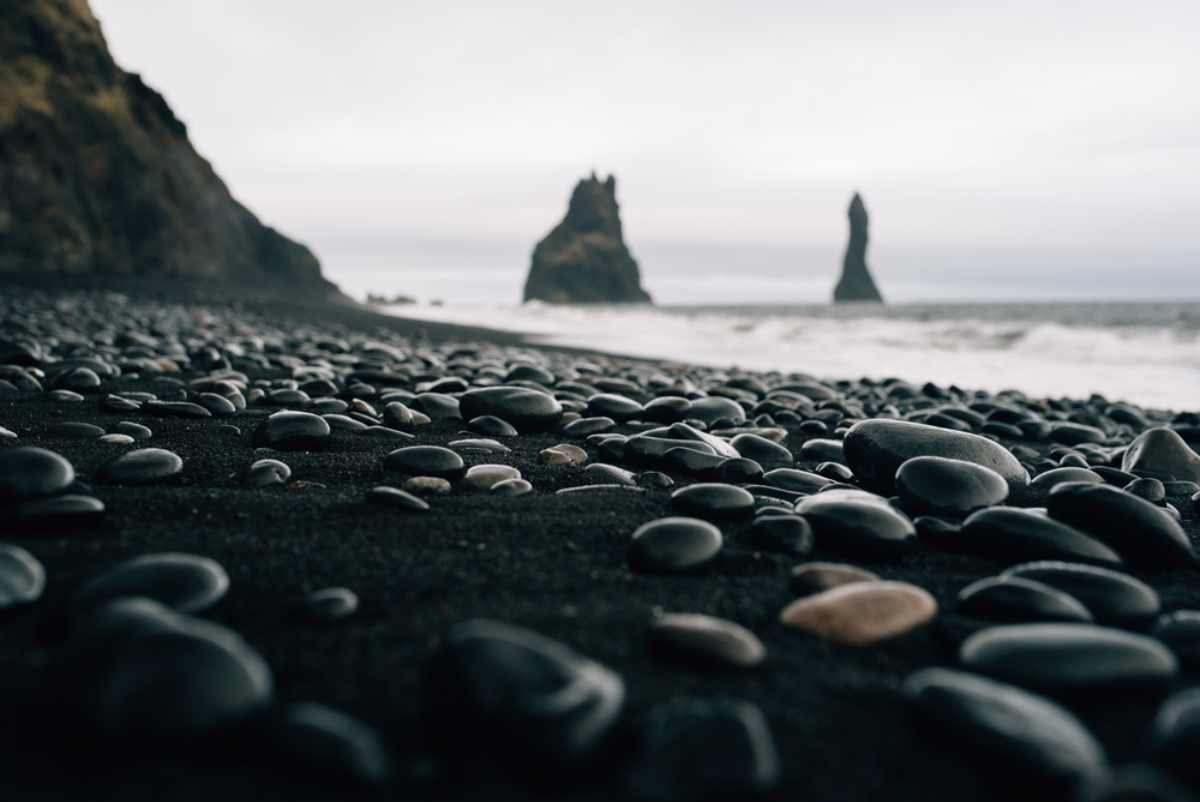
Day 4: Ice and Fire – Skaftafell and Jökulsárlón Glacier Lagoon
Another day in Iceland, another excuse to chase extremes. Start early and head into Skaftafell, part of Vatnajökull National Park, where glaciers and volcanic landscapes collide. Hike to Svartifoss, a waterfall framed by black basalt columns that look like something straight out of a sci-fi movie.
If you're up for the challenge, a glacier hike on Svínafellsjökull will have you trekking across ancient ice. Further east, Jökulsárlón Glacier Lagoon steals the show. Icebergs drift through the lagoon, some massive, others electric blue. Hop on a boat tour for a closer look before heading to Diamond Beach, where ice chunks scatter across black sand like scattered gems.
If you're here in winter, explore the Crystal Ice Cave for a journey deep into the frozen underworld. Set up camp at Svinafell Campground or push on to Höfn, where Iceland's best langoustine dinner awaits. Rest up, tomorrow the wild Eastfjords call.
Day 5: Eastfjords – Remote Roads and Tiny Villages
The next stop on your Iceland itinerary takes you deep into the Eastfjords, where rugged cliffs, winding roads, and sleepy fishing villages replace the tourist crowds. This is Iceland at its most raw, where mountains drop straight into the sea, and the road ahead feels endless.
First up, Djúpivogur, a quirky harbor town where giant stone eggs line the shore at Eggin í Gleðivík. Further north, Stöðvarfjörður hides Petra's Stone Collection, a wild mix of fascinating local rocks and minerals. In Fáskrúðsfjörður, uncover the region's unexpected French fishing history before rolling into Seyðisfjörður, where rainbow-painted streets lead to a blue church straight out of a fairytale.
If time allows, stretch your legs on a hike to Hengifoss, where red-streaked cliffs frame a towering cascade. End the day at Egilsstaðir Campsite, where you can refuel before heading toward the dramatic landscapes of North Iceland. Tomorrow, the adventure continues.
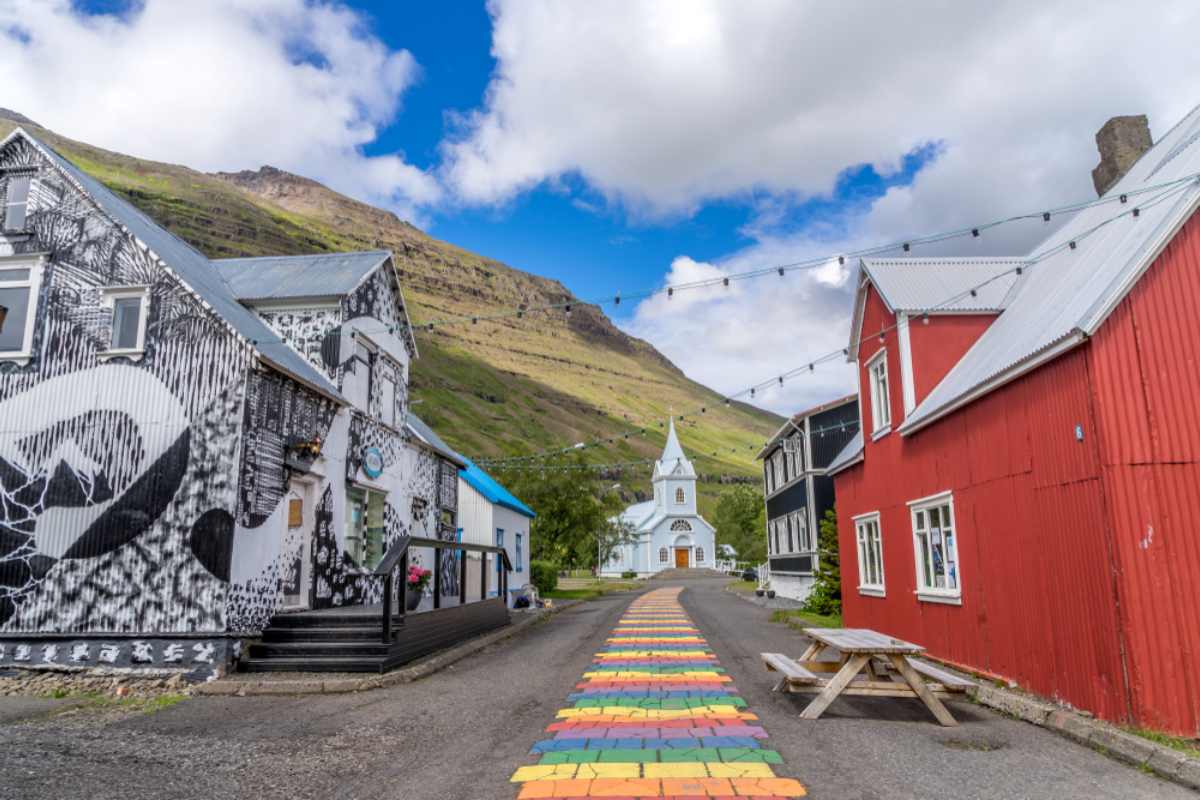
Day 6: North Iceland – Waterfalls, Lava Fields, and Akureyri
The Iceland road trip takes a wild turn today as you trade fjords for volcanic landscapes. Start with Dettifoss, Europe's most powerful waterfall, where the sheer force of crashing water leaves you speechless.
From there, the eerie terrain of Lake Mývatn unfolds, with steaming vents, bubbling mud pools at Námaskarð, and twisted lava formations in Dimmuborgir, a place straight out of a fantasy novel. If the road dust is getting to you, soak in the Mývatn Nature Baths, Iceland's quieter, less touristy answer to the Blue Lagoon.
As you push west, stop at Goðafoss, the legendary Waterfall of the Gods, where Iceland's pagan past met its Christian future. Roll into Akureyri, the so-called Capital of the North, and explore its charming streets, the iconic Akureyri Church, and the waterfront overlooking Eyjafjörður, Iceland's longest fjord. End the day at Hamrar Campsite, refueling for tomorrow's final stretch back to Reykjavik.
Day 7: West Iceland – Waterfalls, Blue Lagoon, and Back to Reykjavik
If you ever needed another reason to go to Iceland, today proves why this country refuses to be ordinary. The road back to Reykjavik is anything but boring, with epic stops still ahead. Cruise through Skagafjörður, home to Iceland's legendary horses, then swing by Borgarnes to dig into Viking history at the Settlement Center.
Further south, the Borgarfjörður region delivers with Hraunfossar, a waterfall spilling straight out of a lava field, and the raging Barnafoss. For a final thrill, explore the Víðgelmir lava cave or soak in the steaming pools of Krauma Spa. Before reaching Reykjavik, stop at Deildartunguhver, Europe's most powerful hot spring.
Spend your last night at Reykjavik Campsite, or if it is time to say goodbye, make one final legendary stop at the Blue Lagoon three hours or four hours before your flight. Sink into those milky blue waters and let Iceland have the last word.
.jpg)
Extra Stops and Wild Detours on Your Campervan Trip
The Iceland itinerary doesn't stop where the guidebooks say it should. Your campervan gives you the power to chase hidden waterfalls, soak in secret hot springs, and carve your own path through lava fields and the Highlands. If your itinerary covers the main Ring Road, make time for these offbeat stops that take your trip to the next level.
Hidden Gems Worth the Detour
- Hvítserkur Rock – A 15-meter (49-foot) basalt sea stack that looks like a dragon drinking from the ocean. If you're into surreal landscapes, this stop is worth the detour.
- Siglufjörður Village – Once the herring capital of the world, it is now a charming, out-of-the-way fishing town with a fascinating museum and a remote, end-of-the-world feel.
- Studlagil Canyon – A jaw-dropping basalt column canyon with a vivid blue river running through it. It is one of Iceland's most photogenic but lesser-known spots.
- Thagil – A secluded canyon near Vík with dramatic cliffs, moss-covered caves, and a small, off-the-grid campsite. A perfect escape from the crowds.
- Kvernufoss – A hidden waterfall near Skógafoss that you can walk behind without the tourist swarm. Short hike, big reward.
- Glymur Waterfall – Iceland's second-tallest waterfall, tucked inside a deep canyon. The hike is challenging, but the view is unbeatable.
Hot Springs and Lava Fields That Scream Iceland
- Berserkjahraun Lava Field – A 3,000-year-old expanse of jagged, moss-covered lava rock on the Snæfellsnes Peninsula. A place that truly looks like another planet.
- Seltún Geothermal Area – Bubbling mud pools, neon-colored Earth, and a hike that takes you right into the heart of Iceland's geothermal madness.
- Hrunalaug Hot Spring – A tiny, scenic hot spring near the Secret Lagoon, surrounded by rolling green hills. Feels like a private spa.
- Strútslaug Hot Spring – Deep in the Highlands, this wild and remote hot spring requires a hike, but soaking in total solitude is worth every step.
- Laufskalavarda Lava Field – A surreal landscape of thousands of stone cairns, where travelers have built stacks for good luck before crossing the dangerous Mýrdalssandur sands.
- Gjáin Valley – A lush, green oasis filled with small waterfalls, lava formations, and a fairytale-like atmosphere. Feels like stepping into another world.
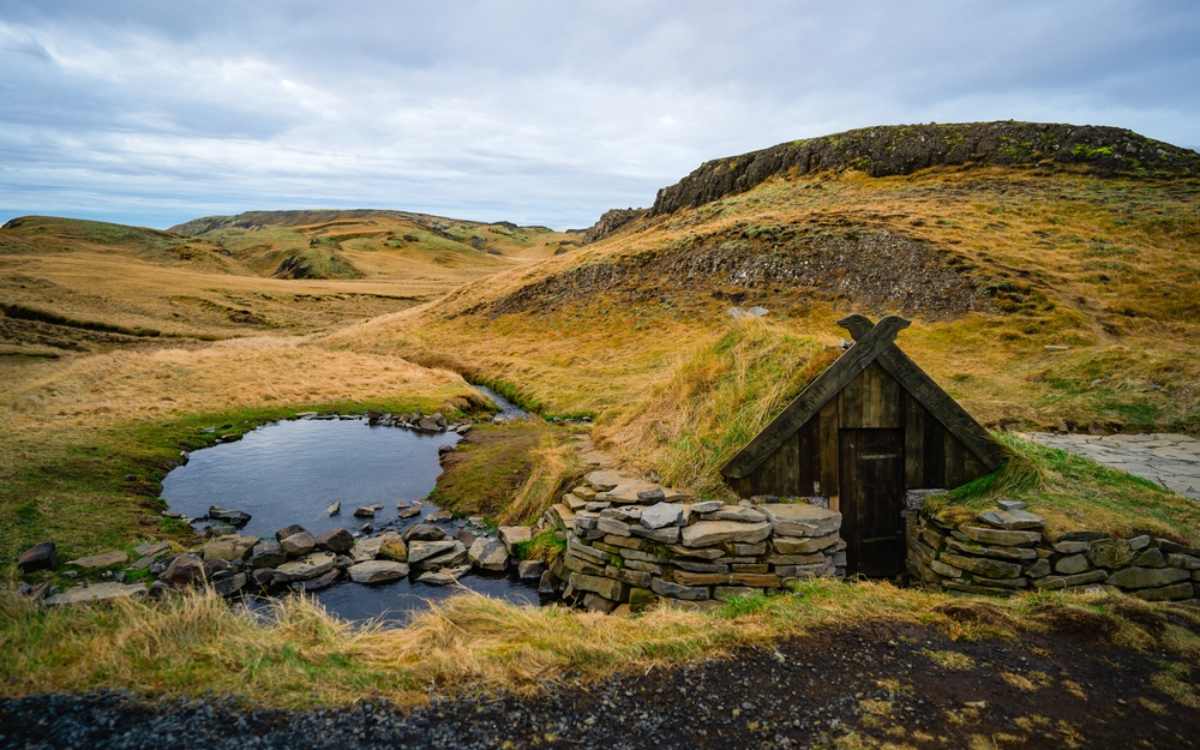
Highland Detours for the Bold and the Brave
Got a 4x4 campervan and an appetite for adventure? Take the road less traveled with these epic detours.
- Landmannalaugar – Rhyolite mountains in colors you didn't know existed, steaming rivers, and unreal hiking trails. You'll need to cross rivers to get here, so come prepared.
- Kerlingarfjöll – A remote wonderland of red-orange peaks, steaming vents, and solitude. The kind of place that reminds you why you ditched the tour buses.
- Hveravellir – A geothermal oasis in the middle of nowhere, complete with steaming fissures and naturally heated pools. A perfect overnight stop for hardcore explorers.
- Askja and Víti Crater – A remote volcanic caldera with an electric blue geothermal lake inside a crater. It's a long, rough drive deep into the Highlands, but standing at the edge of Víti feels like being on another planet.
- Laki Craters (Lakagígar) – A volcanic fissure system made up of over 130 craters, created by one of the largest eruptions in history. The rugged drive and hike reward you with surreal, untouched landscapes.
- Þórsmörk – A hidden valley surrounded by glaciers and mountains, only accessible by driving through deep rivers. A paradise for hikers who want to escape into Iceland's raw wilderness.
- Eldgjá Canyon – The largest volcanic canyon in the world, home to Ófærufoss, a stunning two-tiered waterfall framed by lava walls. The hike here is otherworldly.
- Strútur Hot Spring – One of the most secluded hot springs in Iceland, tucked away in the Highlands. It requires a hike, but nothing beats soaking in complete isolation.
Warning: The Highland F-roads are only open in summer and require a 4x4 campervan. Road conditions can turn brutal fast, so always check before heading off the beaten path.
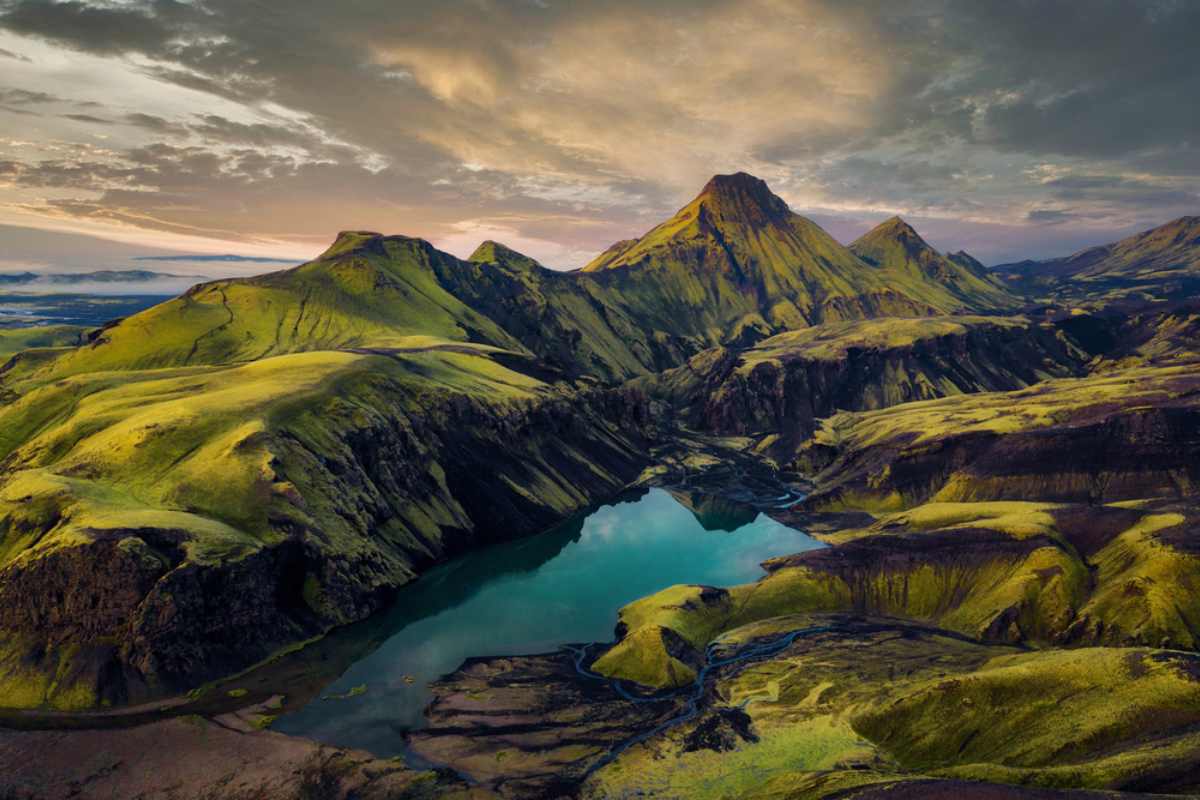
Practical Advice for a Smooth Campervan Trip in Iceland
We know you're burning to get out there and explore Iceland, but before you hit the road, here are a few helpful tips to ensure your campervan trip goes smoothly.
Rolling through Iceland in a campervan means freedom, but only if you're prepared.
Running out of gas in the middle of nowhere? Not fun. Getting caught without supplies before a long stretch of road? Even worse. Here's how to stay ahead of the game so your trip doesn't turn into a survival challenge.
Fuel Up or Get Stranded
- Fill upwhenever you see a gas station, especially in remote areas. The next one might be hours away.
- N1 and Orkan are the most common stations, but many are self-service. Have a credit card ready.
- Consider a prepaid fuel card to make life easier.
Stock Up Like a Pro
- Reykjavik, Akureyri, and Egilsstaðir have the best grocery stores. Smaller towns? Not so much.
- Bonus and Netto are your go-to budget supermarkets. Load up before heading into the wild.
- Icelandic tap water is pure and free. Bring a reusable bottle and skip overpriced bottled water.
- Pack non-perishable snacks for long drives.
Apps and Tools That Keep You on Track
Navigation Must-Haves
- Download offline maps on Google Maps or Maps.me because cell service is spotty in remote areas.
- 112 Iceland app lets you check in your location and call for help in an emergency.
- Vedur.is is your go-to for weather updates and road conditions.
Campsite and Parking Tools
- Tjalda.is lists all official campsites.
- The Camping Card app shows the locations and amenities of participating sites.
- Park4night helps find camper-friendly overnight parking.
Iceland's Driving Rules: What You Need to Know
Speed Limits
- 50 km/h in towns
- 80 km/h on gravel roads
- 90 km/h on paved roads
Essential Road Rules
- Headlights must be on at all times. Yes, even at noon.
- Off-road driving is illegal and comes with hefty fines.
- Seatbelts for everyone, always. No exceptions.
- Using a mobile phone while driving is illegal. Hands-free or nothing.
F-Roads and Highlands: No Joke
- Only 4x4 campervans can enter F-roads. Regular vans will not survive.
- Check road.is before heading into the Highlands since conditions change fast.
- Be ready for river crossings and rough terrain if you go off the main roads.
Parking Smart
- Use designated parking areas. No roadside stops in dangerous spots.
- Check for meters or time limits in towns.
- Never park on moss or fragile landscapes. It takes centuries to recover.
Weather Warnings
- Icelandic winds can rip campervan doors off. Hold on tight.
- Winter storms can shut roads down fast. Check conditions daily.
- Strong gusts can flip vehicles. If the wind warnings are high, park and wait it out.
Iceland rewards the prepared and punishes the reckless. Stick to these tips, and your campervan trip will be smooth, wild, and unforgettable.
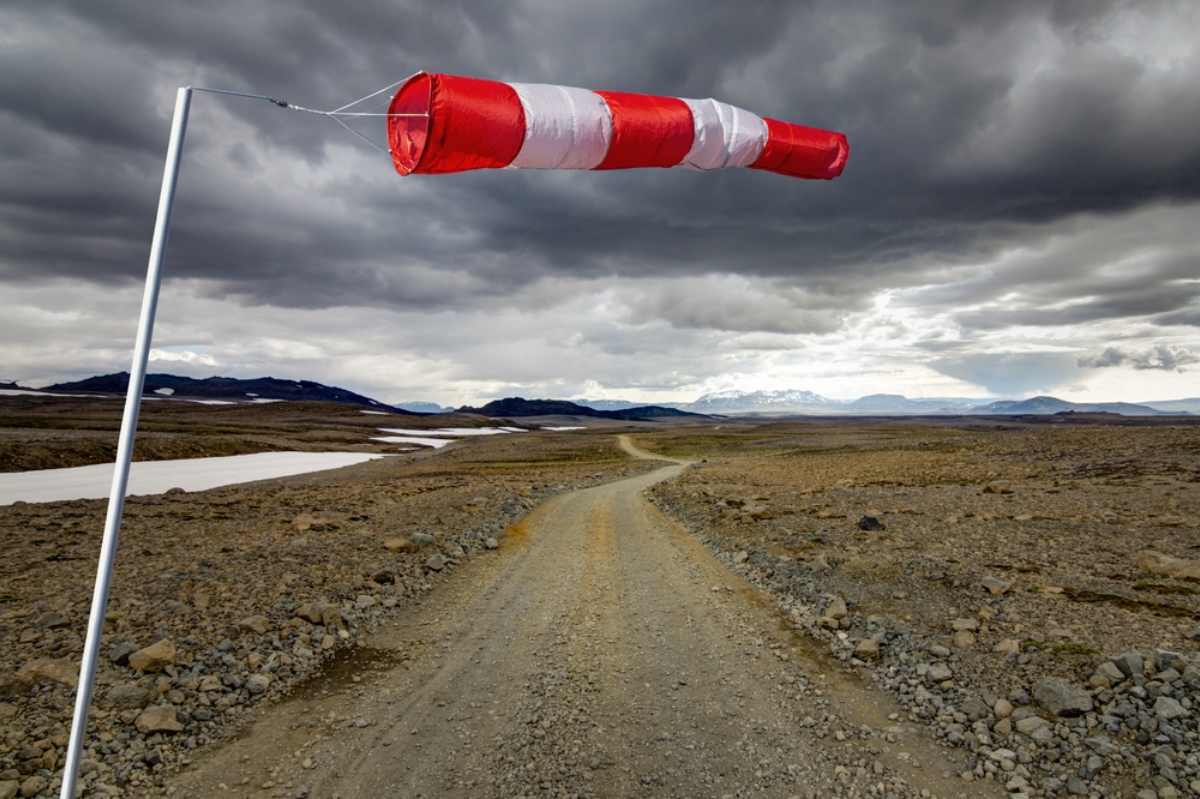
Frequently Asked Questions About Campervan Itineraries in Iceland
How Many Days Do You Need to Explore Iceland by Campervan?
A week in Iceland is ideal for a full Ring Road trip, but 10-14 days allows deeper exploration. For a shorter adventure, 5 days cover the South Coast and Golden Circle.
What Are the Best Seasons for a Campervan Trip?
Summer (June-August) offers long daylight hours and open Highland roads, while shoulder seasons (May and September) bring fewer crowds. Winter (November-March) is possible but requires a 4x4 camper and extreme weather preparation.
Are There Restrictions on Where You Can Park or Camp?
Yes, wild camping is illegal for campers. Overnight stays are only allowed in designated campsites or approved parking areas. Always check signs and avoid damaging fragile landscapes when choosing a spot.
Take This Iceland Itinerary and Run With It
You didn't come all this way for a scripted, tourist-trap experience. This Iceland itinerary gives you the framework, but the real adventure? That's up to you. Chase waterfalls, soak in hidden, hot springs or take an unplanned detour down a lonely gravel road.
When you visit Iceland, it isn't just about the landscapes; it's about the freedom to explore at your own pace. Rent a campervan in Iceland, hit the open road, and make this trip your own. No limits, no schedules, just pure, unfiltered Iceland. Now go—your adventure is waiting.

